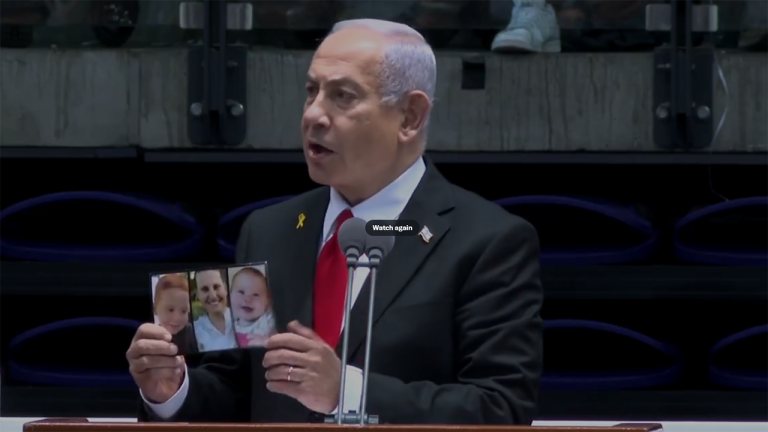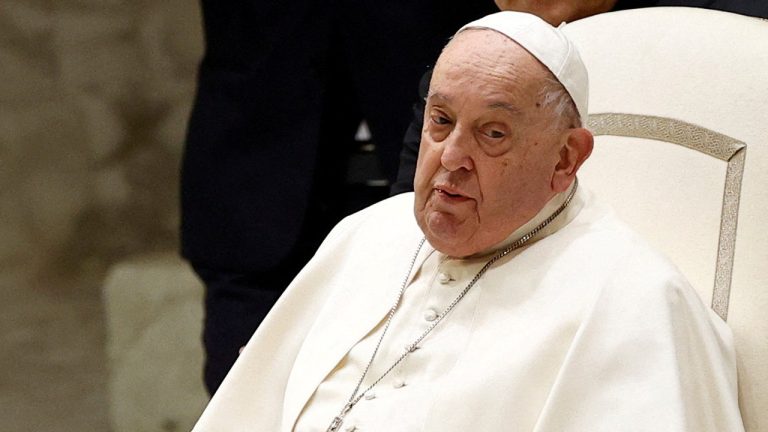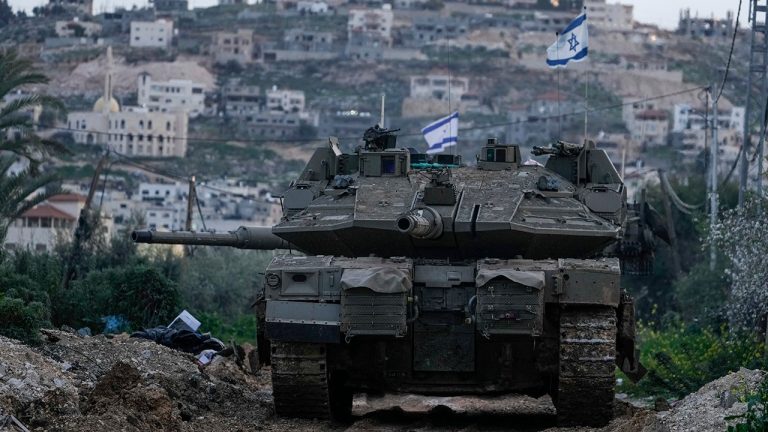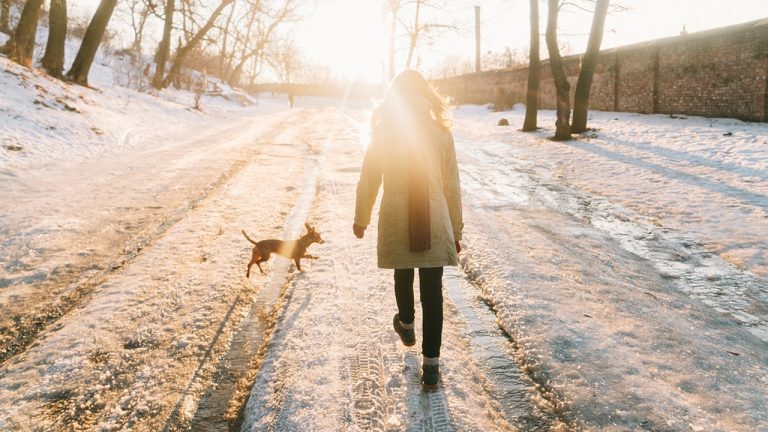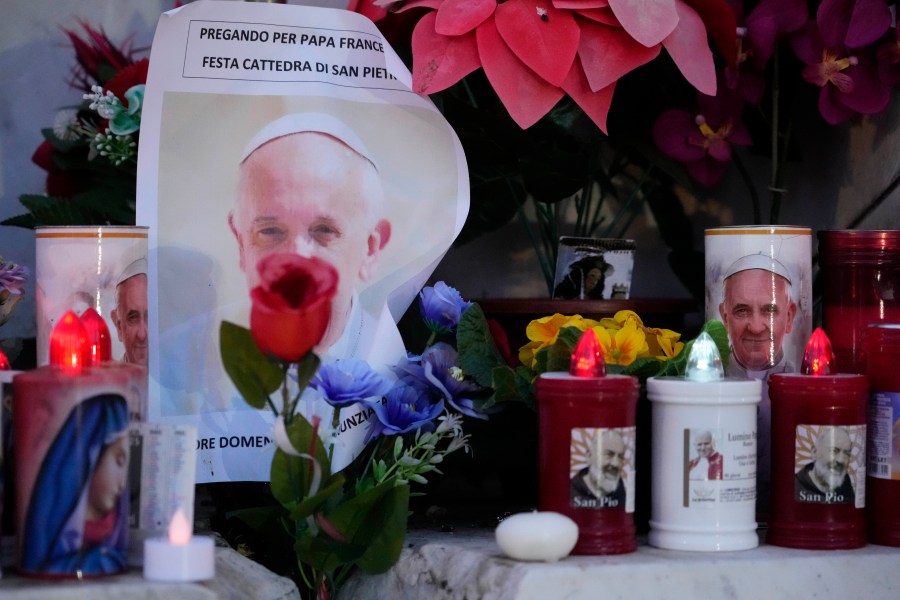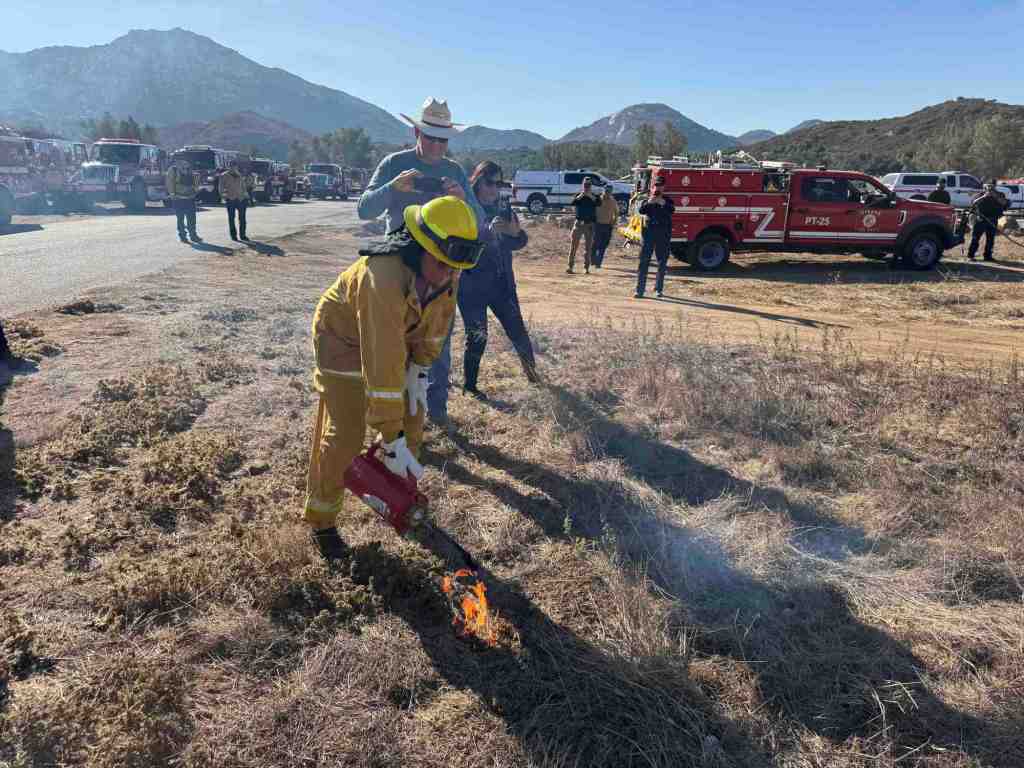
A meadow on the Barona reservation overgrown with grass and invasive weeds hadn’t burned for decades. When the devastating Cedar fire swept through the valley in 2003, it destroyed 39 tribal homes.
But on a crisp morning in December, the vice chair of the Barona Band of Mission Indians, clad in a firefighter helmet and yellow gear, offered a blessing for safety. Then Beth Phoenix Glasco leaned down and started a fire.
Around her, dozens of firefighters kept close watch as Glasco did what Native Americans had done for thousands of years in California — she brought “good fire” to the land.
Such cultural burns reduce fuels, promote species diversity and can encourage the growth of specific plants for medicine, food or weaving. Glasco’s own uncles engaged in such burning on the reservation in the 1970s to help their crops.
Once Glasco’s patch of grass ignited without a problem, firefighters lit other small fires in the meadow. Within a few hours, 160 acres were cleared.

Cal Fire and Barona officials said it was a prescribed burn and a cultural fire.
It marked the first time in recent years a San Diego County tribal reservation conducted a planned burn in partnership with Cal Fire. And it may not be the last. Next up could be a meadow on tribal lands near Alpine.
The cooperation comes as the state encourages more beneficial fires to occur on public, private and tribal lands. The idea is to burn off fuels to lessen the risk of catastrophic wildfires.
The state set a goal of burning around 400,000 acres with beneficial fire this year. That includes both prescribed fires to clear away dried vegetation and cultural burns.
But there are challenges. Burns on some tribal lands must follow government rules that can exceed what a private property owner has to follow. And that creates frustration among some cultural burning advocates who see such policies as ignoring tribal sovereignty.
Those who plan “good fires” say it can be a heavily bureaucratic process. State officials say they have taken steps to encourage and support cultural burning.

Burning’s long history
Cultural burning is the centuries-old intentional use of fire by Native Americans to manage the land and achieve specific goals — from cleanup to maintaining travel corridors, aiding hunting and opening up pasture lands. It also plays an integral part in traditional ceremonies and tribal life. Some prefer to call it indigenous land stewardship.
But such burning was largely curtailed with the arrival of European settlers, who regarded the setting of fires primitive and dangerous. The practice was outlawed by Spanish laws in the late 1700s and again by California law in 1850. Aggressive fire suppression policies were put in place.
Without the regular application of fire, forests became crowded with trees and accumulated material, providing fuel for fires. By the 1950s, some scientists sounded the alarm that suppressing fire created ecological problems.
Controlled burns gained favor again around that time, aided by the advocacy of UC Berkeley ecologist Harold Biswell, who argued the fires were highly beneficial and rooted in state history. As a result, agricultural burning became more widely used around the state.
In San Diego County, prescribed burning occurred on some tribal lands over the years, although the practice seemed to fall out of favor by the 1990s.

Barona Fire Chief Ken Kremensky remembers working as a young state firefighter in the late 1970s, conducting prescribed fires on the Barona reservation to convert brushland into grassland for cattle-grazing.
Such burns were not continued, however. Glasco, the tribal vice chair, said farming there largely stopped in the 1980s, and Kremensky said environmental regulations also changed.
“It just took forever to get through all the paperwork just to go out there and burn,” he said.
The practice of burning private property also slowed. Landowners gave up the practice, at least in part out of concern about safety and liability if the fires got out of control, Cal Fire Division Chief Eric Just said.
The pendulum has swung the other way in recent years after a rash of devastating wildfires, fueled by heavy growth in California forests and worsened by hotter and drier conditions. Just said destructive fires led the state to roll back some of its requirements in order to encourage more controlled burns.
“We kind of need to get back to more of the 1980s, 1990s style of burning where a lot of the general public engaged in maintenance burning and different things, whether it’s for agricultural reasons or cattle,” Just said.
Cal Fire’s prescribed burning in the region nearly doubled in the last few years to just under 1,500 acres last year, officials said.
The department is now seeking to partner with some of the 18 federally recognized tribes in the county. Plans are in the works to burn around 300 acres of an overgrown meadow used for cattle grazing on the Viejas tribal reservation near Alpine.
“The tribes represent a huge portion of land ownership here in San Diego County, and that for me is certainly a group that I want to engage with,” Just said.

‘They want a lot of paperwork’
But there are challenges.
Some cultural fire proponents see government regulation of intentional fire — including air quality permits, burn permits and environmental reviews — as interfering with tribal sovereignty.
Finding out what is required is complicated and depends a lot on jurisdiction. Some areas require an OK from the state, others from the federal government through the Bureau of Indian Affairs.
Wesley Ruise Jr., tribal chairman and fire chief for the La Jolla Band of Luiseño Indians, worked decades with the U.S. Forest Service, was a certified “burn boss,” and ran prescribed fires on federal land to manage fuels. Now retired, he is working to bring good fire to tribal lands and reclaim tribal traditions.
In the past year, Ruise helped plan burns on reservations in San Diego and Riverside counties. He’s familiar with the time-consuming process of going through the BIA.
“They want fire management plans, prescribed burn plans, forest management plans — they want a lot of paperwork and qualified people to do a burn,” he said.
Ruise said he and others conducted burns last year targeting a specific invasive insect, the goldspotted oak borer, which has been killing native oak trees. At another reservation, they have been applying fire to patches of juncus grass because the plant provides better material for weaving after being exposed to fire.
Ruise welcomes the state law changes and hopes there will be revisions to federal laws as well.
“We are still jumping through some of those hoops, but we are slowly trying to get away from that so we can make our own decisions on where we want to burn, when we want to burn and so we can burn,” Ruise said. “That’s what we are working toward.”

Legal gains, barriers remain
In the wake of years of devastating wildfires, California officials called on expanding the use of prescribed fire and cultural burning, and state lawmakers approved a series of bills that support the effort.
One new law limits liability for property owners and “burn bosses” in the event a fire escapes its planned boundaries, except in cases of gross negligence. Another established a pilot $20 million insurance fund that can be tapped for claims.
And Senate Bill 310, in effect since last month, says Native American tribes can reach agreements with the state Secretary of Natural Resources — and separately with local air pollution control districts — that would allow them to engage in cultural burning in ancestral territories. Under the agreements, specified state permitting or regulatory requirements would not be required — so tribes wouldn’t need to seek permission for each burn.
Despite those gains, some supporters of tribal burning say there’s a disconnect between the state’s goals to increase burning and what occurs in the field, especially when it comes to tribal sovereignty. And there are varying definitions of what is considered a cultural burn.
Frustrations over cultural burning were clear last spring at a state wildfire resiliency task force meeting held at San Diego Zoo Safari Park, when two panelists criticized San Diego County’s Cal Fire personnel for “harassing” practitioners.
Emily Burgueno said her father was arrested on suspicion of arson while burning on his East County reservation in 2023. She said family members had always burned the land, and that her father was practicing his culture when he was subjected to a “false arrest.” He later pleaded guilty to a misdemeanor.
During the state meeting, she shared a slide of her father setting a fire. “For everybody with a badge on, look away, because this is a crime right here,” said Burgueno, a member of the Ipay Nation of Santa Ysabel. “This is what we call implementing tribal sovereignty.”
Another panelist, Marlene’ Dusek said she wanted to “call out” Cal Fire for having poor relations with local tribes. She suggested its employees undergo annual cultural awareness training so they would better understand tribal history, including the genocide of Native Americans.
“There is a lot of harm that’s being done by these agencies to our people and that’s what we are seeing in real-time right now,” Dusek told the gathering. “None of us are protected when we are out trying to do what we do — we could be arrested at any point in time and it is just a matter of what agency person is going to show up that doesn’t know us, that doesn’t know our people, that doesn’t know our history, our practices and are automatically going to write us off.”
Cal Fire officials say they’re working more closely with tribal leaders and have good relations with some tribes but are trying to improve relations with the rest. In recent years, the agency has hosted cultural burning awareness workshops and invited tribal practitioners to share their knowledge and expertise.
Len Nielson, staff chief for prescribed fire and environmental protection, said the agency is “working on it all the time.”
For her part, Glasco, the vice chair at Barona, feels relief after the prescribed burn, which removed invasive weeds and will refresh meadow grasses. She said she hopes tribal members will feel safer as a result.
“I think we were happy to get this first one done and clear out that area to provide peace of mind for those in the subdivision that burned the first time,” she said.
Originally Published:


